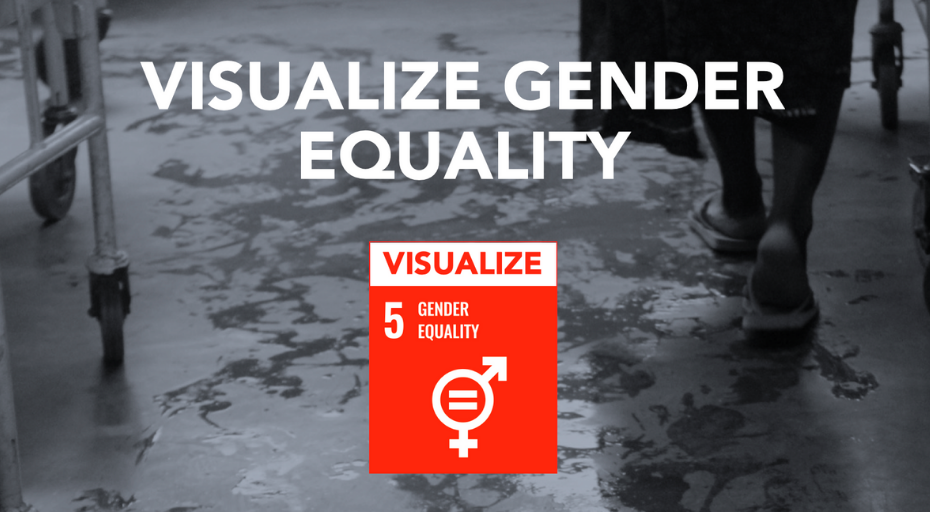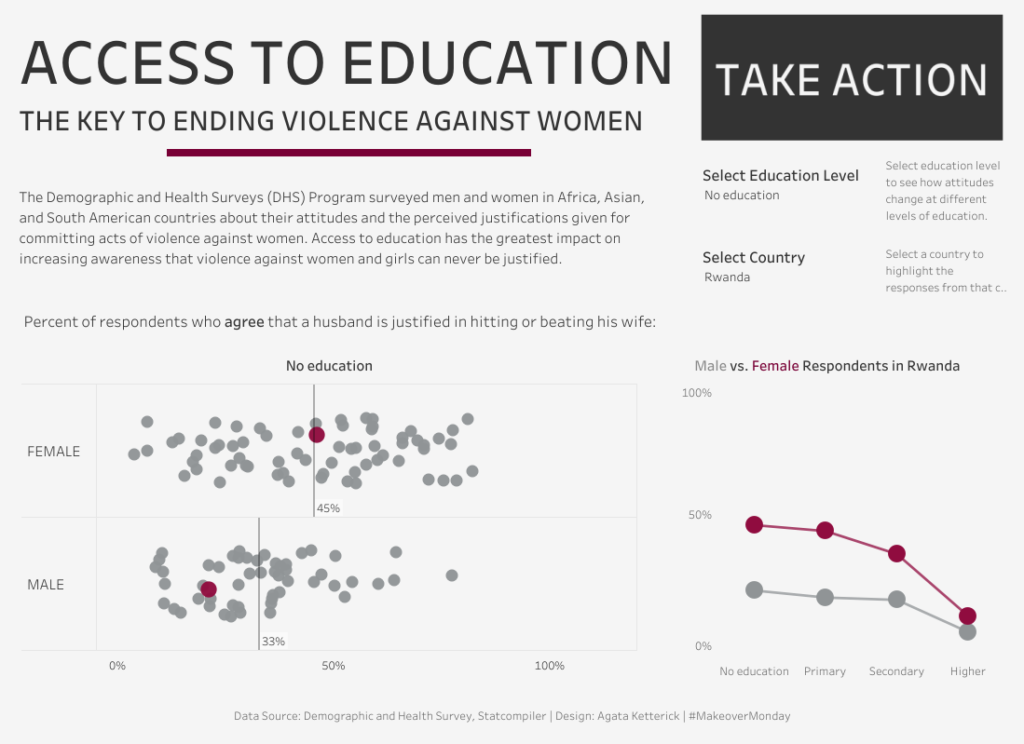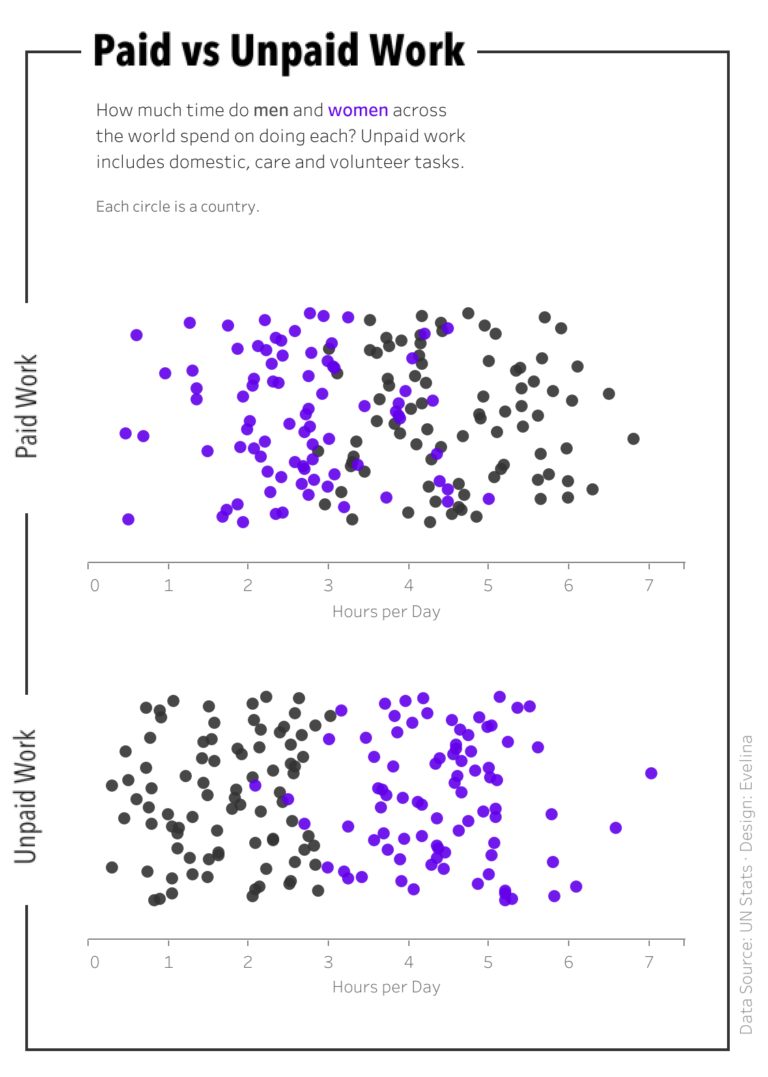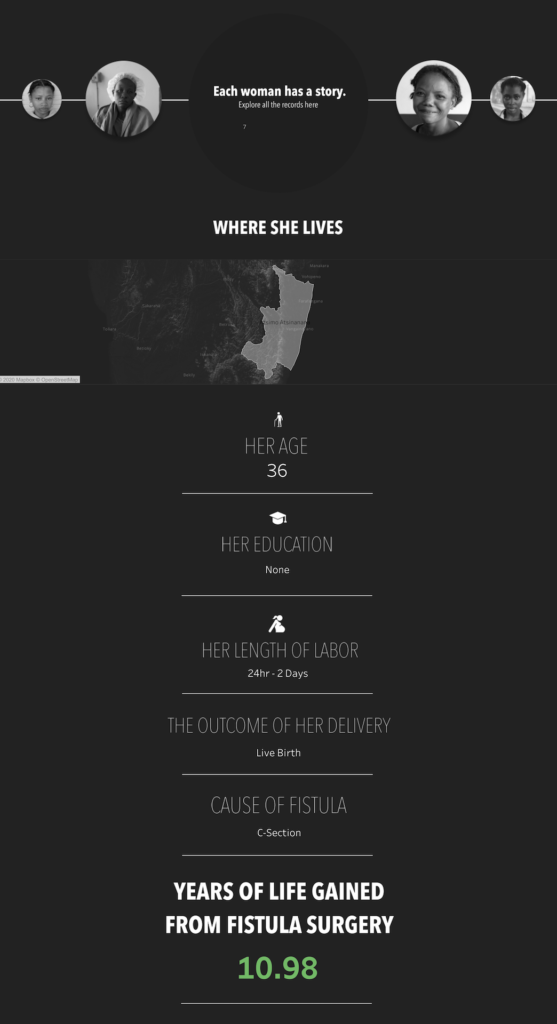Theme #4 – Female Genital Mutilation (FGM)
The data shared via Viz5 came from
Hope for Girls & Women – an NGO in Tanzania working to end FGM. Hope for Girls & Women was founded by the Tanzanian activist
Rhobi Samwelly in 2017. Rhobi’s personal experience of being forced to undergo female genital mutilation as a child inspired her lifelong commitment to fight for the rights of girls and women. Their two safe houses in the Butiama and Serengeti Districts of the Mara Region of Tanzania, provide shelter and support those fleeing FGM, child marriage, and other forms of gender based violence.
Their team of dedicated staff offer safe house residents vocational training, such as classes that teach tailoring and computer skills. Through this training they support women’s entrepreneurship and economic empowerment. Women use their new skills to generate much needed income, becoming valued providers for their families, while also increasing their independence, and making them less vulnerable to forced marriage and FGM. The data Viz5 shared from Hope for Girls & Women is based on the admissions of girls to their safe houses since 2017.
Often, Rhobi will receive a phone call from activists in a village saying that a girl is at high risk of FGM, or even being prepared for their “cutting ceremony.” Once she receives that call, Rhobi alerts the Police Gender Desk and Social Welfare, who attempt to rescue the girl and bring her to the safe house. Once the girl is admitted, data is collected and recorded by the safe house. This includes basic information such as age at admittance, the district and region that they are from, as well as certain socio-demographic information, including their religion, and whether they have ever attended school. They also collect information about the circumstances surrounding the admission to the safe house; the type of case, who delivered them to the safe house, their health status, and any immediate needs upon arrival.
The ‘type of case’ field in the data refers to the reason for the girl being admitted to the safe house. Where the type of case is described as child marriage, rape, or violence, this means the girl has tragically already experienced this, and is being admitted to the safe house for protection and support. Where the type of case is described as FGM, this means that either the girl is at risk of imminently undergoing FGM, and has been admitted for protection, or she has already undergone FGM, and is in need of sanctuary and support.
Often, girls arrive at the safe house only with the clothes on their backs, and so need to be provided with clothing and shoes, in addition to individual medical care and counseling. Girls admitted to the safe house are also assessed by a social welfare officer, who will recommend a course of action, including the provision of short-term or long-term protection, facilitated reconciliation with her parents, or the prosecution of the perpetrators.
Many girls at the safe house may only need to stay for the short-term – often for the length of the cutting season. During this season there is typically a huge surge in cases of FGM. The season usually last for around 6 weeks, and coincides with the long school holidays in the month of December.
For those girls seeking refuge for the duration of the cutting season, there follows a period of time during which Hope for Girls & Women supports reconciliation with their families. This happens with facilitation and support from safe house staff, and involves educating families about the dangers of FGM, the legal consequences, and their daughter’s rights to continue education. Following this, most families go on to sign an affidavit stating that they will not cut their daughter. After this, their daughters will return home, leaving the safe house. Sometimes, however, girls are at particularly high-risk, and need longer-term protection at the safe house. During their longer stay at the safe house they either attend school or learn a trade, and are supported and nurtured by safe house staff.
In addition to the provision of these holistic support and care services to the girls and women in their care, Hope for Girls & Women actively participates in community outreach events to open up dialogue within local FGM practicing communities, and raise awareness of the harm caused by FGM and other forms of gender based violence.
Hope for Girls & Women is utterly dedicated to the fight to end FGM, and Viz5 stands with them – together, we can raise awareness, and drive action to end this human rights abuse, and create a more equal world for girls and women everywhere.
“Thanks to the Viz5 and MakeoverMonday communities, we now have a set of high-quality data visualizations for our work. The data we’re collecting enables us to identify the areas where further support is necessary, and helps us more effectively target our interventions and efforts in the fight against FGM.” – Rhobi Samwelly, Founder, Hope for Girls & Women
Our fourth SuperViz is awarded to
Liam Spencer! Their viz clearly highlights key data points, and is beautifully visually aligned with the branding from this month’s partner organization. Liam’s viz also includes a call to action at the end, which helps to capture the mission of Hope for Girls & Women, making this month’s SuperViz a highly effective advocacy tool for their work.
The standard of visualizations this month was exceptional, and we would like to give a special mention to
Priya Padham’s viz, which is beautifully designed and powerfully explores and presents the data.
Well done to everyone who took part!




